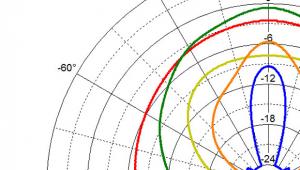Review: Velodyne vFree Bluetooth headphones Page 2
Measurements
To measure the performance of the vFree, I used a G.R.A.S. 43AG ear/cheek simulator, a Clio FW audio analyzer, a laptop computer running TrueRTA software with an M-Audio MobilePre USB audio interface, and a Musical Fidelity V-Can headphone amplifier. Measurements were calibrated for ear reference point (ERP), roughly the point in space where your palm intersects with the axis of your ear canal when you press your hand against your ear. I experimented with the position of the earpads by moving them around slightly on the ear/cheek simulator, and settled on the positions that gave the best bass response and the most characteristic result overall. Note that this headphone presented two measurement diffuculties: the iffy seal that the somewhere-in-between over-ear and on-ear design achieved on the ear/cheek simulator, and the inherent latency of Bluetooth, which required me to set a time window for the measurement that affected the measured frequency response.
All that said, the vFree in passive (cabled) mode shows a broad bass boost, a strong peak at 3.3 kHz, and very strong peak between 6 and 10 kHz. The measurement in Bluetooth mode suggests a more neutral tonal balance: flatter bass, softer treble, and stronger midrange. Adding 70 ohms output impedance to the V-Can's 5-ohm output impedance to simulate the effects of using a typical low-quality headphone amp (in passive mode, not Bluetooth, of course) boosts bass by about +1 dB at 50 Hz, which should be barely, if at all, audible.
I couldn't measure total harmonic distortion (THD) at 100 dBA in Bluetooth mode because the inherent latency of Bluetooth prevented me from doing a sine sweep. Measured using the cable, distortion is a little high in the bass: 5% at 100 Hz, rising to 9% at 20 Hz.
Isolation is pretty typical for a headphone of this type, just -5 dB at 1 kHz but dropping to -20 to -25 dB at higher frequencies. Impedance runs about 35 ohms through most of the audio band, while average sensitivity in cabled mode from 300 Hz to 6 kHz at the rated 32 ohms impedance measures 104.8 dB.
Bottom line
Based on our panelists' reactions, I'd expect most listeners to rate the vFree's sound somewhere between good and great. So for sound quality, we'll give it a thumbs-up. In terms of the ergonomics and ease of operation, we'll give it a mild thumbs-down, although I think you could probably get used to the weird control layout after a while. The big questions are whether or not you like the design and whether or not the vFree fits you well-and those things you gotta figure out for yourself.
- Log in or register to post comments
























































